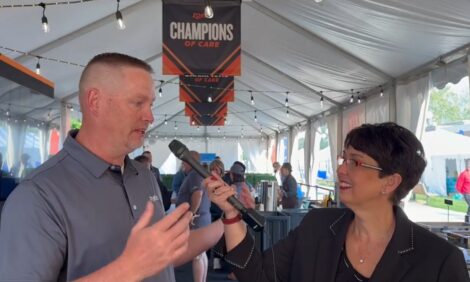



Sow Housing Options
Sara Willis of DEEDI and Neil Gannon of University of Queensland headed a committee of the Queensland Pig Consultancy Group (QPCG), which organised a Seminar and Trade display on Sow Housing Options for 2017 – Meeting the Challenge.
Although QPCG has only 64 members, the event on 8 April at Toowoomba attracted 105 people from Queensland, 15 from NSW, five from SA, eight from Victoria and two from Canada. Of the 135 attendees, 72 were producer representatives covering 45 farms and the Queensland attendees represented about 85 per cent of the sows in that state’s herd. The meeting began with six three-minute presentations from representatives of the participant companies in the trade display of the Electronic Sow Feeders, which are an essential component of the group housing systems.
The main presentations were by producers, or managers of production facilities, which have commenced the installation of group housing facilities and their experiences with the installations and the effects on production on-farm.

Riley’s Wrap
John Riley of IAS Management excellently summarised the historical perspectives of group sow housing, drawing on experiences in Europe for the past 28 years and applying those findings to the current situation that Australian producers find themselves in. The importance of space allowance, rather than group size, in the decline of aggression in group-housed sows was an interesting result, as was the finding that lifetime performance has proved better in group-housed sows than in traditional stalls.
Engaging Staff
Laurie Brosnan of BettaPork and James Hurley of Tong Park then provided personal experiences with the challenges facing producers when deciding whether or not to retrofit existing facilities. They discussed not only the cost and installation of the physical refit, but also the management issues resulting from what is a major change to production systems.
Using two different methods of operation after the refitting, Laurie and James highlighted the essential nature of engaging motivated and enthusiastic staff in ensuring the new production methodology is a success and actually increases production figures.
Slick Chick
Steve Chick of Cameron Pastoral Company then presented on lessons learned during an international trip evaluating systems operating in commercial operations and then applying those to CPC operations. The key factors were meeting customer expectations, short-term affordability and long-term sustainability and Steve emphasised that CPC is still assessing the best method for managing mating and moving sows into group-housing facilities.
It is definitely not a 'one size fits all' scenario. To be sustainable, whatever management is in place, there must be no decline in performance, it must be a simple operation and can’t be labour intensive. The essential component is to maintain a flexible approach to achieving the solution.
Shaw Thing
Kenton Shaw of Rivalea provided an excellent overview and history of group housing options which have been explored and implemented at Australia’s largest pig production operation. Once again, the message was the variety of methods which can be utilised to achieve the same outcome and that a flexible approach is by far the most effective. Graeme Pope of Rural Solutions then provided a South Australian perspective of the responses from producers to the phasing out of gestation stalls.
Optimistic Mood
Overall the seminar was a resounding success, as there was a general mood of optimism that all was not lost and viable solutions were available to enable producers to remain in the industry in a sustainable manner. The variety of manufactured solutions on display and the personal stories of presenters allowed an open exchange of ideas, good and bad, to be explored. Also, the activity and quality of discussions around the trade displays during breaks between presentations demonstrated a clear intention to grasp the initiative and make informed decisions on how best to move into this new phase for the industry.
June 2011






